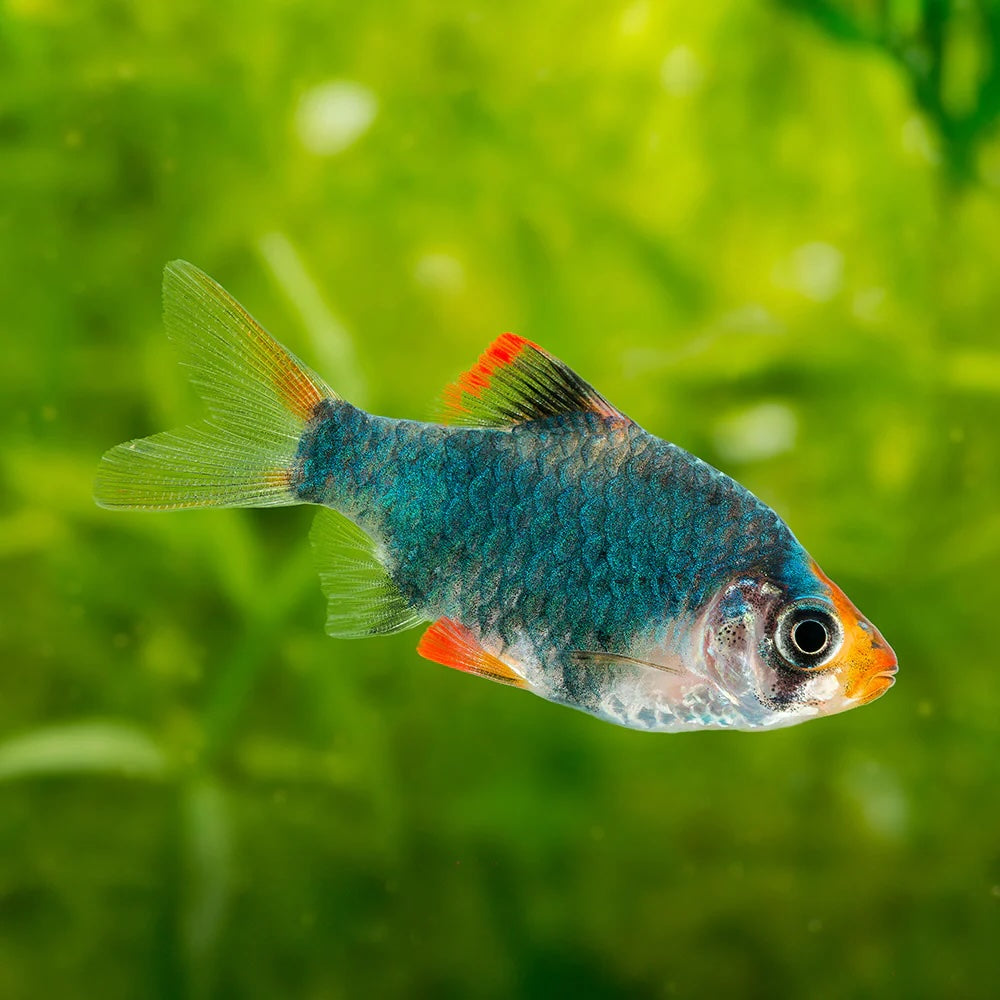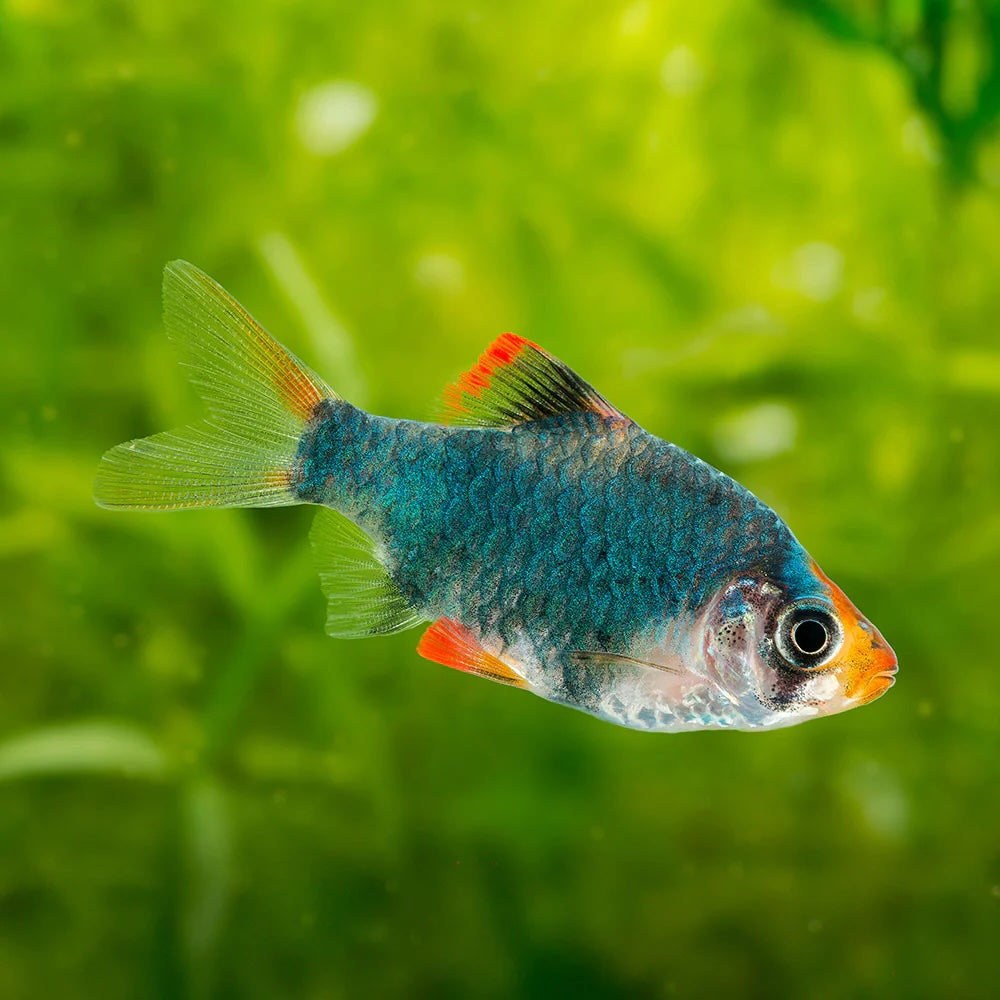Green Tiger Barb
Green Tiger Barb
12 in stock
Couldn't load pickup availability
The Green barb is a lively fish that will add activity and colour to the mid-level and bottom part of the aquarium. Green barbs are non-aggressive and will do fine in community aquariums with other peaceful species of similar size. Always get at least 5 Green barbs, preferably more, since this is a schooling species that will become stressed and shy if kept alone or in really small groups. When well cared for, a Green barb can reach an age of 4-6 years in captivity.
Green barb habitat:
The Green barb is a colour variant of Puntius semifasciolatus, a barb native to subtropical parts of South East Asia. Your Green barbs will therefore appreciate a water temperature in the 18 -24°C (64-75°F) range in the aquarium. The native habitat for Puntius semifasciolatus is the Red River basin and freshwaters rivers and streams in Laos. The Red River originates in the Yunnan province in China, flows through Vietnam and empties into the South China Sea. Today, you can find introduced Puntius semifasciolatus populations in other parts of the world as well, including Singapore and Hawaii, U.S.
Green barb description:
The Green barb is a medium long barb of the minnow family (Cyprinidae) and the biggest scientifically measured Puntius semifasciolatus had attained a length of 7 cm (2.8 inches).
This fish has a complete lateral line, a posteriorly serrated last simple dorsal ray and a highly arched back. Just like its relatives, the Green barb has a set of highly sensitive barbells that is can use to navigate and search for prey in murky waters. The barbells are fairly short and positioned at the corners of the mouth on the upper jaw.
Green barb setup:
As mentioned earlier, Green barbs should always be kept in schools consisting of at least 5 specimens, preferably more. Even though wild Puntius semifasciolatus stay fairly small, captive specimens can grow much bigger than the 7 cm reported from the wild. You must therefore have a big enough aquarium to house them in and a 50 L aquarium is considered an absolute minimum. Green barbs are active and need a lot of swimming space. They will also need spots to hide in and adding plants is recommended since their native habitat is densely grown. Since they hail from fast rivers and streams, Green barbs are fond of some current in the aquarium.
Green barb tank mates:
If your aquarium is big enough, you can combine a school of Green barbs with a wide range of other peaceful fish species of similar size, provided that they like the same water quality and temperature. Examples of species known to work well with Green barbs are Platy (Xiphophorus maculatus), the Bristlenose Catfish (Ancistrus dolichopterus) and the Neon Rainbowfish (Melanotaenia praecox). If you want to stick to Asian species, you can for instance pick Opaline Gourami (Trichogaster trichopterus) and Paradisefish (Macropodus opercularus).
Really timid fish can sometimes be a little scared when a sturdy, active school of Green barbs swims by, but Green barbs can on the other hand function as relaxing dither fish as well since they are so at ease as soon as they are kept in a big enough school.
Green barb care:
Caring for a Green barb is not difficult because it is very sturdy as long as it is kept in a school. If kept alone, the stress can make it prone to disease. Green barbs are known to tolerate a pH-value between 6 and 8, but neutral or slightly acidic water (pH 6.5-7.0) is recommended. Soft or medium hard water is best, ideally around 8 dGH. Most Green barbs will however adapt to conditions from dGH 5 to 19. The water temperature should be in the 18 “ 24° C (64 “ 75° F) range. This is somewhat lower than most tropical species.
Green barb feeding:
In the wild, Puntius semifasciolatus sticks to a varied diet that consists of detritus, plant matter, worms, insects and small crustaceans. It will therefore need a varied diet in the aquarium and must be given vegetable based food as well as meaty treats. You can for instance use high quality tropical flake food as a base and give your Green barb regular treats in the form of worms, adult
Shop now, pay later with 4 interest-free installments with AfterPay
Share


